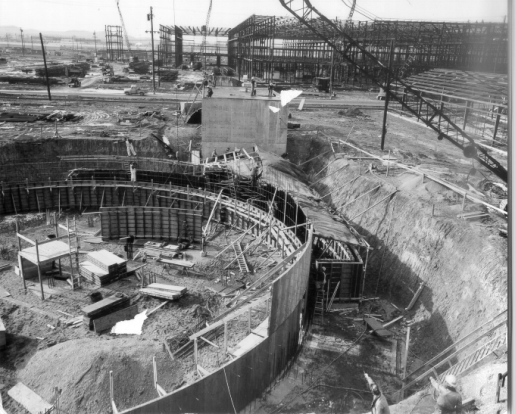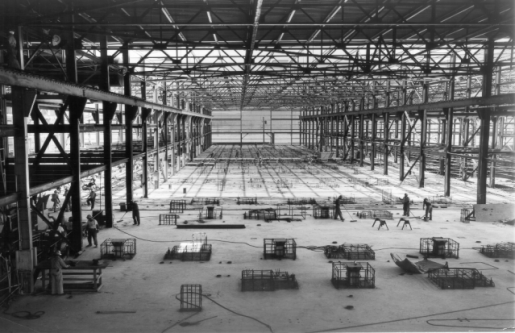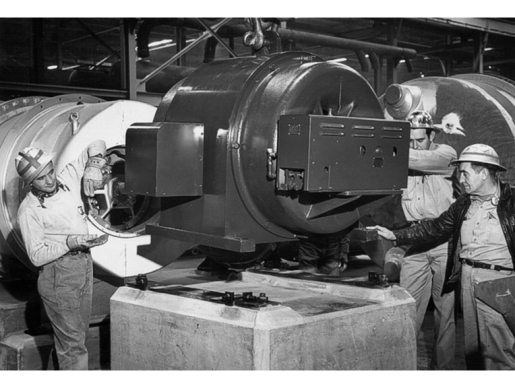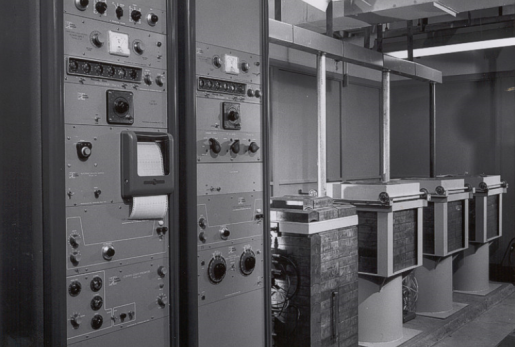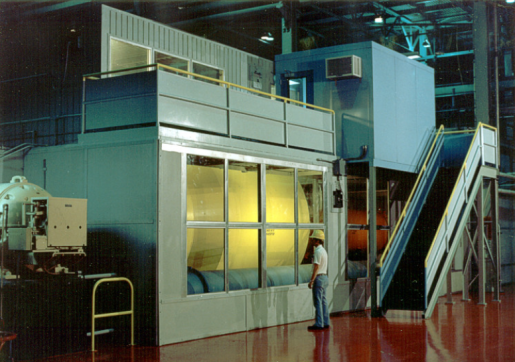Background
For approximately 50 years, the Portsmouth Gaseous Diffusion Plant supported federal government and commercial nuclear power missions. In the early 1950s, the Atomic Energy Commission sought to dramatically expand its production of enriched uranium for military purposes—nuclear submarines and weapons—and to provide fuel for a burgeoning nuclear power industry.
Considering the areas abundant water resources and labor force, and availability of reliable electrical power and transportation routes, Pike County, Ohio, was chosen in 1952 to complement the federal government's gaseous diffusion program already well under way at Oak Ridge, Tennessee, and Paducah, Kentucky. Construction of the Portsmouth Gaseous Diffusion Plant began in late 1952 with a mission to increase the national production of enriched uranium and maintain the nation's superiority in the development and use of nuclear energy.
In the 1960s, the site took on a more commercial focus, enriching uranium mainly for nuclear power plants. In 1993, the production facilities were leased by DOE to the United States Enrichment Corporation (USEC)—now Centrus Energy Corporation—to restructure and transition the government's uranium enrichment operations for nuclear power plants to the private sector. From 1991 until production ceased in 2001, the Portsmouth Site produced only low-enriched uranium for commercial power plants. In 1993, uranium enrichment operations were turned over to USEC in accordance with the Energy Policy Act of 1992. In 2000, uranium enrichment production was terminated at the Portsmouth Site. Some of the facilities were no longer required by USEC and subsequently returned to DOE. Uranium enrichment activities at Portsmouth concluded in May 2001. In 2011, USEC returned the gaseous diffusion plant facilities to DOE for decontamination and decommissioning.
Portsmouth Virtual Museum
DOE launched the Portsmouth Gaseous Diffusion Plant Virtual Museum website, portsvirtualmuseum.org, to preserve the rich history of its southern Ohio plant that supported the nation’s nuclear weapons program. The public can view photos, watch interviews with current and former workers who share historical accounts, and browse old newsletters on the Portsmouth Gaseous Diffusion Plant from as far back as the early 1950s with the touch of a computer keyboard or screen.


